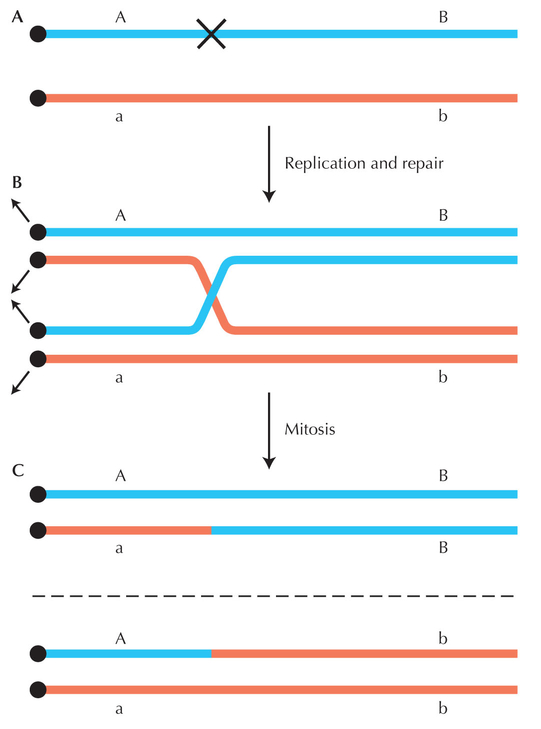

Figure WN23.7. Repair of double-stranded damage may lead to a somatic crossover, which then causes homozygosity of the region of chromosome distal to the centromere. (A) One of two homologous chromosomes suffers damage (cross). The centromeres are shown at left. (B) At replication, the damage is repaired using information from the homologous chromosome and leads to a crossover. (C) Depending on how the centromeres segregate (arrows in B), the two daughter cells (shown separated by a dotted line here) may become homozygous for the whole region beyond the point of damage. Thus, the gene to the left of the crossover remains heterozygous in both cells (Aa), whereas the gene to the right has become homozygous in both cells (bb, BB).
| © 2007-2010 by Cold Spring Harbor Laboratory Press. All rights reserved. |
| The reproduction, modification, storage in a retrieval system, or retransmission, in any form or by any means, electronic, mechanical, or otherwise, for reasons other than personal, noncommercial use is strictly prohibited without prior written permission. You are authorized to download one copy of the material on this Web site for personal, noncommercial use only. The material made available on this Web site is protected by United States copyright laws and is provided solely for the use of instructors in teaching their courses and assessing student learning. Dissemination or sale of any of this material, as a whole or in parts (including on the World Wide Web), is not permitted. All users of these materials and visitors to this Web site are expected to abide by these restrictions. Requests for permission for other uses of this material should be directed to Cold Spring Harbor Laboratory Press, 1 Bungtown Road, Cold Spring Harbor, NY 11724 or submitted via our World Wide Web Site at http://www.cshlpress.com/. |